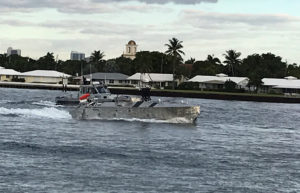
The Navy’s top acquisition official said the Navy will be ale to pay for the new unmanned systems in part by gaining efficiencies across platforms to tie unmanned plans and systems together. “Resources are an important consideration. Requirements without resources are hallucinations,” Assistant Secretary of the Navy for Research, Development and Acquisition James Geurts said during a press call on Sept. 10. He added that efforts like the unmanned campaign plan will help scale up unmanned efforts more efficiently than…

 By
By 











